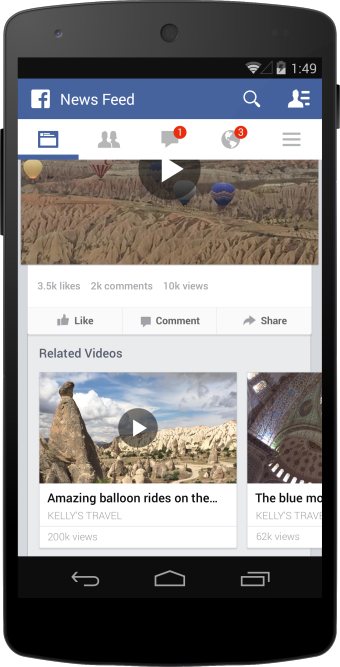With so many things happening, and so many voices speaking simultaneously, it’s hard to believe that a single event can still monopolize the attention of social media networks. Yet this happens all the time, and we don’t have to look far for examples—whether it’s the Ice Bucket Challenge, the presidential election, or the release of a new device.
While we were busy discussing the practical value of the Apple Watch and comparing the iPhone 6 with the 6 Plus, other news in the world of social revolved around shopping on Twitter and Tumblr, and taking selfies no bigger than a thumbnail.
We round up the latest in the news of the social web to make sure you never miss the exciting development of things. Now that you have pre-ordered your new iPhone, let’s get you caught up.
Latest from the Big 4
Twitter tests a direct purchase feature
Last week, we mentioned a promise made by Twitter’s VP of Engineering about upcoming changes to the social network’s Timeline.The latest experiment is a feature that would allow users to make purchases directly from their Twitter feeds. Tweets with these features would have a ‘Buy’ button, which, when pressed, would take users to a separate payment page. This is Twitter’s first commerce feature, and it could indicate the start of a new era for sales campaigns on social media.
Facebook videos will now show view counts
Over the past year, Facebook has been meticulously tweaking the way videos show up on the users’ News Feed: the AutoPlay feature, introduced last year, started the video as soon as you scrolled past it; and video ranking was introduced in the summer. In order to help users see the best video content, all public videos will now have view counts displayed on the bottom—so you can see how your execution of the Ice Bucket Challenge compared to your friends’, for example. Facebook announced they were also testing another feature on their mobile app, which gives suggestions to videos similar to the ones just watched.
Next big thing
No-pressure selfies with Tiiny
Would you take selfies more often if they weren’t in high resolution? Creators of Tiiny app believe that the pressure of looking good or composing the perfect Instagram post stops us from enjoying the main function of photographs—documenting memorable moments of everyday life. That’s why they created an app for sharing thumbnail pictures or GIFs that measure only 212×212 pixels. The picture can’t be expanded, and it disappears from the album 24 hours later, to save you from the troubles of deleting party pictures the following morning.
Mobile users shop on Tumblr
Is your business on Tumblr yet? If we haven’t pestered our readers enough about the importance of having a Tumblr account, now there are stats to prove it. A recent Adobe study found out that Tumblr generates more revenue-per-visit value on mobile than Facebook, Twitter, and Pinterest. Principal analyst for Adobe Digital Index Tamara Gaffney told Mashable that this may be partly the result of dominant demographics on Tumblr, which the image-sharing network believes to have a higher average income than other networks. Although advertising on Tumblr has reportedly been difficult, maybe for those artistic pictures, the number of reblogs and hearts is the best kind of advertising.
Long read: Internet Slowdown Day and Net Neutrality
Most of us can recall the painful minutes spent staring at a spinning wheel or a slowly crawling bar on our computer monitors, waiting for a web site to load. Indeed, these days, a slow Internet connection seems like a thing of the past, a scary tale to tell your children if they misbehave, or a result of some uncharacteristic network disruptions. But on September 10, users opened the front pages of major websites like Tumblr, Vimeo, and Kickstarter, to discover the much-hated loading wheel.
This was Internet Slowdown Day, when users observed no actual slowness in the functions of any of the major sites. Instead, these images represented solidarity in an effort to bring attention to the United States’ Federal Committee Commission’s ongoing rulemaking to limit open Internet principles. The campaign’s call to action was to submit comments regarding the FCC’s Internet policies before the approaching deadline, September 15.
Results of the campaign were released on the official website, reporting over 700,000 comments filed to the FCC, in addition to thousands more calls, emails, and Facebook comments.
The real impact of the campaign on net neutrality is hard to determine just yet, but it did show us that, besides cats and Jennifer Lawrence, the Internet also loves…the Internet.
Don’t miss any news by setting up streams on your Hootsuite dashboard.
Install Hootsuite today!


